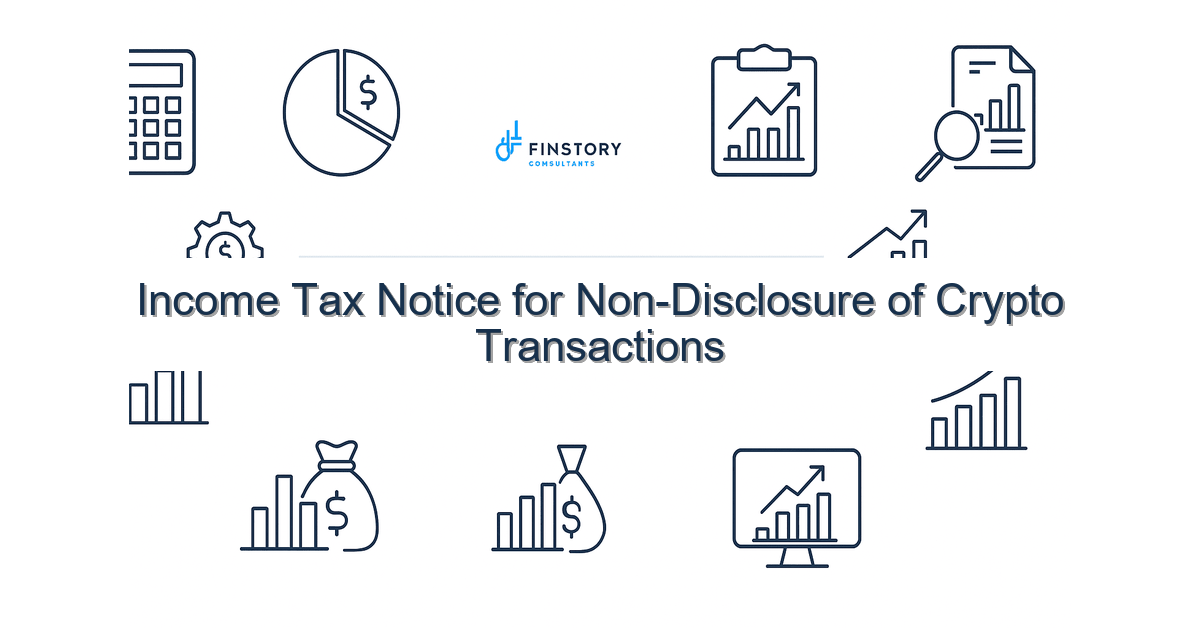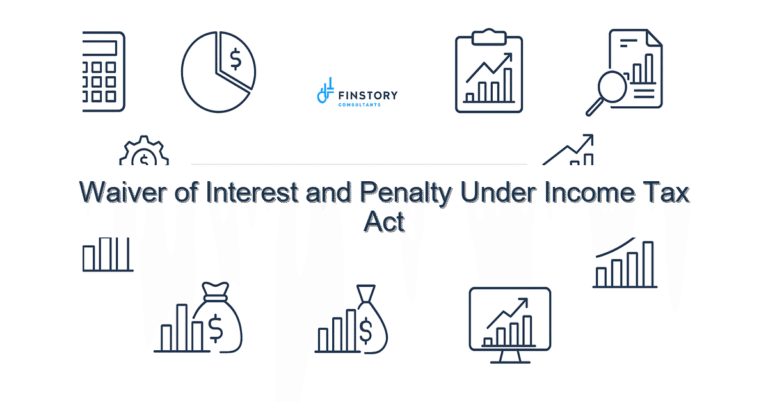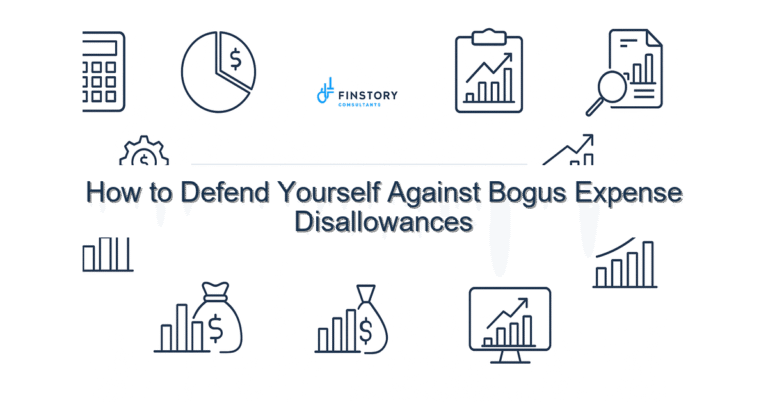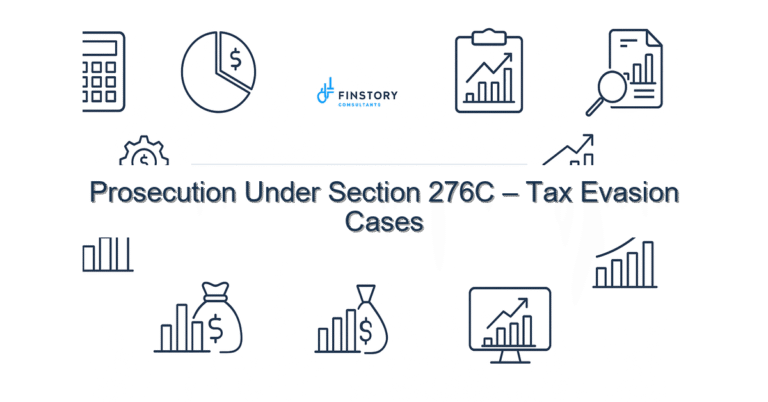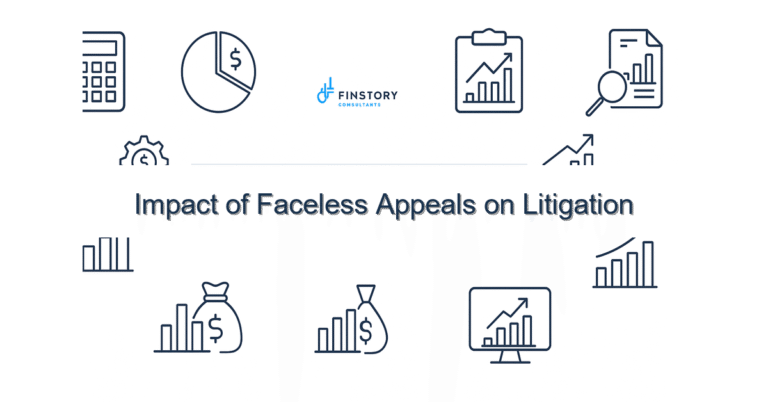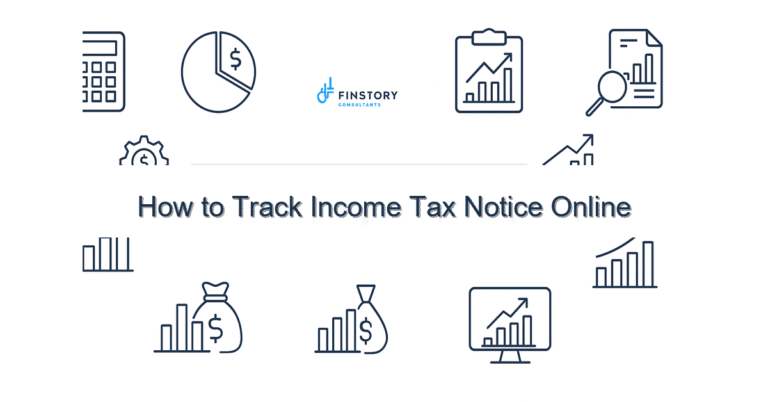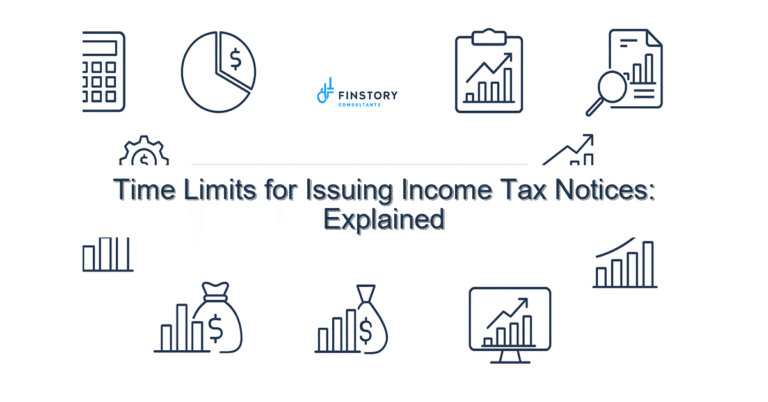Income Tax Notice for Non-Disclosure of Crypto Transactions
We know that getting an income tax notice related to crypto can feel sudden and scary — especially if crypto record-keeping wasn’t your priority. You’re not alone: many salaried professionals, founders and MSME owners face the same confusion when tech meets tax rules.
Summary: If you receive an income tax notice for non-disclosure of crypto transactions, act fast: collect trading records, reconcile with AIS/26AS and exchange reports, respond within the deadline, and get professional help to reduce demand and penalties.
What’s the real problem in India?
Crypto is a new asset class for the tax department too. Notices often come from automated data matches between exchanges, banks, and reporting portals. That means gaps in disclosure — even unintentional ones — can trigger scrutiny under various assessment provisions (you’ll see references to AY/PY, section numbers and CBDT timelines in the notice).
- Symptom: You receive a notice under section 143(1) or a notice to furnish details under section 142(1).
- Symptom: A notice under section 148 (income escaping assessment) for earlier AY/PY based on exchange or bank data.
- Symptom: Demand includes TDS/TCS mismatches visible on AIS/26AS.
What people get wrong
Common pitfalls are simple but costly. Many taxpayers assume crypto gains are untaxed, or treat crypto like a hobby instead of disclosable income. Others ignore small transactions that later aggregate into large taxable gains. Key mistakes:
- Assuming capital gains indexation or standard exemptions apply to every asset — crypto may be taxed differently depending on how it’s treated.
- Not reconciling exchange statements with AIS/26AS or the e-filing portal before filing ITR.
- Missing the ITR filing last date or failing to respond to the notice within the CBDT deadline.
- Overlooking TDS/TCS entries, especially with new rules like 1% TDS on certain virtual asset transfers (check current rules and dates).
A better approach
Responding well to a crypto notice is about organisation, speed and honest disclosure. Use this simple framework:
- Gather records: download all exchange trade history, wallets, receipts, bank statements and invoices for the relevant PY/AY.
- Reconcile with official data: check AIS/26AS and TDS/TCS entries on the e-filing portal. Note mismatches.
- Classify transactions: segregate sales, transfers, airdrops, gifts and purchases — determine taxable events and their nature (capital gain vs business income).
- Prepare a reasoned response: draft facts, calculations and supporting attachments; request more time if needed under section 148/142(1) timelines after consulting a tax expert.
- Negotiate and comply: if a demand is reasonable, settle using the prescribed mechanisms; if disputed, consider filing a rectification, revised return or appealing with help.
Real-world story: A SaaS founder received a notice for crypto sales worth ₹15 lakh that weren’t disclosed. After reconciling exchange vouchers with bank inflows and correctly classifying long/short-term gains, the founder reduced the initial demand by 40% and avoided penalty by voluntarily paying due tax plus interest within the CBDT timelines.
Quick implementation checklist
- Don’t panic — note the notice type, sections cited and the deadline to respond.
- Download all exchange CSVs, wallet export files and bank statements for the relevant PY/AY.
- Login to income tax india e-filing portal; pull AIS/26AS and cross-check TDS/TCS entries.
- Prepare a summary ledger: date, asset, qty, value (INR), consideration received/paid, taxable gain/loss.
- Identify applicable tax treatment — capital gains or business income — and note if capital gains indexation applies or not.
- Draft a short, factual reply addressing each query in the notice; attach supporting docs and reconciliations.
- If needed, file a revised ITR and include a computation and explanation of previously omitted crypto income.
- If demand is raised, compute tax, interest and estimate penalty; pay the tax to limit interest where possible.
- Seek a professional review before sending the response; preserve all audit trails and digital export files.
What success looks like
Clear outcomes you should expect when you follow the right process:
- Lowered or rescinded demand percentage — often a 30–60% reduction after correct classification.
- Fewer follow-up notices and faster closure of the case (days to weeks vs months).
- Reduced penalties through voluntary disclosure and timely payment.
- Cleaner ITRs next year with reconciled AIS/26AS and no surprises at the ITR filing last date.
- Better documentation so future TDS/TCS mismatches are avoided.
Risks & how to manage them
Ignoring a notice increases risk: demands, interest, penalties and potential prosecutions in severe cases. Common risk management steps:
- Respond within the deadline — even to request more time.
- Do not destroy records; keep exports from exchanges and wallets with timestamps.
- If you relied on an incorrect advisor previously, get a second opinion before responding.
- Monitor new vs old regime slabs and Section 80C limit implications if crypto income affects your overall tax bracket.
Tools & data
Use the right tools to make this practical:
- AIS/26AS — to confirm TDS/TCS and reported sale proceeds.
- Income tax e-filing portal — to view notices, upload responses and check AY/PY details.
- Exchange-exported CSVs and wallet transaction history for raw data.
- Spreadsheet or tax software to compute gains (consider time-weighted cost and transfer histories).
- TDS/TCS tracking tools and reconciliation apps that import AIS/26AS and exchange CSVs.
FAQs
Q: I have small crypto trades — will they trigger a notice?
A: Small trades can aggregate on exchange reports. If an exchange reports transfers or sales that don’t match your ITR, the department may issue a notice. Reconcile AIS/26AS to be safe.
Q: Can I use capital gains indexation for crypto?
A: Indexation applies to certain long-term capital assets. Tax treatment for virtual digital assets can differ; some taxpayers find indexation blocked for certain crypto gains. Check specifics with an advisor.
Q: What if TDS/TCS was wrongly deducted or not shown in AIS/26AS?
A: Raise the issue with the payer/exchange and request correction; you can also report mismatches on the e-filing portal. Keep proof of follow-up; it helps when responding to notices.
Q: Should I file a revised return if I missed crypto income?
A: Often yes — a revised return along with voluntary payment of tax and interest can reduce penalties. The right timing depends on the notice and AY/PY involved; consult a tax expert.
Next steps
If you’ve received a notice, start collecting records now. If you’re unsure how to classify transactions, or want help reconciling AIS/26AS with exchange data, we can help prepare a robust response and negotiate with the tax office.
Need guidance on ITR filing last date, new vs old regime slabs, or how Section 80C limit affects your overall tax plan once crypto income is added? We’ll walk you through it and help reduce further notices.
For practical help, see our resources
Work with Finstory. Speak with an Expert for a personalised plan to reduce your tax outgo and stay compliant. Book a free 20-min consultation.
📞 Need help with Income Tax in India?
Book a 20-min consultation with our tax team. Individuals, founders & MSMEs welcome.
Prefer email or phone? Write to info@finstory.net
or call +91 44-45811170.
